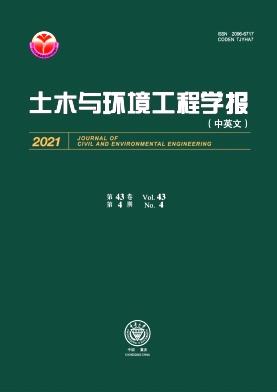基于水质指数模型的尼日利亚Ishiagu Ihetutu矿区地表水水质评价
Q2 Engineering
Tumu yu Huanjing Gongcheng Xuebao/Journal of Civil and Environmental Engineering
Pub Date : 2020-01-01
DOI:10.37421/jcde.2020.10.352
引用次数: 1
摘要
采用水质指数(WQI)模型对石谷县伊鹤土土矿区周边河流、溪流和池塘的地表水进行了水质评价,以评价其在不同季节的饮用适宜性。在雨季、雨季末、旱季和旱季末采集地表水样品,从溪流、池塘和矿井的水面以下10 cm处采集到1.0 L的聚乙烯瓶中,用去离子水彻底冲洗。样品在4°C的冰盒中保存,然后运往实验室进行分析。采用pH、Cl-、SO42-、NO3 -、DO、BOD5、Ca2+、Mg2+、K+等9个理化参数的标准方法对样品进行消化分析。采用NESREA地表水调制值作为标准值,物理化学参数平均值作为观测值,确定各采样站的WQI。理化参数取值范围为:pH = 6.52 ~ 7.49;Cl- = 13.70-795.25 mg/L;SO42- = 19.28 ~ 229.25 mg/L;NO3 - = 0.33 ~ 3.72 mg/L;DO = 5.72 ~ 8.76 mg/L;BOD5 = 12.19-18.20 mg/L;Ca2+ = 6.56 ~ 130.44 mg/L;Mg2+ = 2.06-20.89 mg/L;K+ = 4.51 ~ 32.93 mg/L。平均WQI值和季节WQI值均>100,表明该地区地表水资源不适合饮用,但Iyiogwe河在旱季后期的WQI值为98,表明其地表水质量非常差。结果表明,未经处理的矿山废水、垃圾场和其他污染物从点源和非点源排放到河流、溪流和池塘/坑中,是地表水质量极差的原因,因此必须在使用前进行适当处理,以避免与水有关的疾病。这项研究为伊赫图图山的地表水现状建立了一个数据库,可用于管理该地区的池塘/坑、溪流和河水,并研究采矿活动对地表水质量的影响。本文章由计算机程序翻译,如有差异,请以英文原文为准。
Assessment of Surface Water Qualities in Ihetutu Mining Areas of Ishiagu, Nigeria, using Water Quality Index Model
The quality of surface water from rivers, streams and ponds around Ihetutu mining areas in Ishiagu, was evaluated using Water Quality Index (WQI) model, to assess their suitability for drinking purposes at different seasons. Surface water samples were collected in rainy, late rainy, dry and late dry seasons, from 10 cm below water surface of the streams, ponds, and mine pits into 1.0 L polyethylene bottles, rinsed thoroughly with deionized water. The samples were preserved at 4°C in an ice box and then transported to the laboratory for analysis. Samples were digested and analyzed, using standard methods for nine physico-chemical parameters including pH, Cl-, SO42-, NO3 -, DO, BOD5, Ca2+, Mg2+, K+. NESREA regulatory values for surface water were used as standard values while mean values of the physico-chemical parameters were used as observed values to determine the WQI for each sampling station. Ranges of the physico-chemical parameters were: pH = 6.52–7.49; Cl- = 13.70–795.25 mg/L; SO42- = 19.28-229.25 mg/L; NO3 - = 0.33–3.72 mg/L; DO = 5.72–8.76 mg/L; BOD5 = 12.19–18.20 mg/L; Ca2+ = 6.56–130.44 mg/L; Mg2+ = 2.06–20.89 mg/L; and K+ = 4.51-32.93 mg/L. Average and seasonal WQI values were found to be >100 which indicated that the surface water resources in the area were unsuitable for drinking, though Iyiogwe stream had a WQI value of 98 in the late dry season, indicating rather a very poor quality of its surface water. The results revealed that untreated mine wastewater, dumps, and other contaminants discharged from point and non-point sources into the rivers, streams, and ponds/pits were responsible for the extremely poor quality of the surface water, and must therefore be treated properly before use to avoid water related ailments. The study created a database for current status of surface water on Ihetutu hills, which can be used for the management of ponds/pits, stream and river water in the area, and the study of the impact of mining activities on the surface water qualities.
求助全文
通过发布文献求助,成功后即可免费获取论文全文。
去求助
来源期刊

Tumu yu Huanjing Gongcheng Xuebao/Journal of Civil and Environmental Engineering
Engineering-Architecture
CiteScore
1.30
自引率
0.00%
发文量
5346
 求助内容:
求助内容: 应助结果提醒方式:
应助结果提醒方式:


